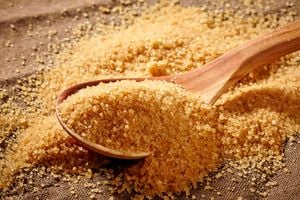
Sugarcane harvested at a farm in Mabanga village, Kanduyi in Bungoma County being loaded onto a tractor before transportation.
Kenyan sugarcane millers are under increased pressure to process growing yields from farmers as deliveries to factors in the first seven months of the year hit the highest level in over 10 years.
Data by the Agriculture and Food Authority (AFA) reveals that deliveries by farmers to factories in the period to July hit 5.5 million tonnes, the highest level since 2014, and even higher than the total recorded last year.
This is a 44 percent growth from last year’s 3.8 million in a similar period, signalling better prices for sugar amidst increasing production by local millers, reducing reliance on imports, which are normally costlier due to customs taxes.
Monthly deliveries by farmers has been steadily growing within the year, hitting 926,379 tonnes in July, the highest quantity ever delivered in a month, pointing to higher yields by farmers.
This has resulted in a growth in production by millers, which also rose 42 percent, tripling from last year’s 33,246 tonnes to 83,849 tonnes in July alone.
Cumulatively, sugar production has improved by 42 percent to 468,295 tonnes in the seven months to July, according to data from AFA and the Sugar Directorate.
“The sugar industry has seen substantial growth over the past year, with total production in the first seven months of 2024 up by 42 percent compared to last year,” said the AFA in a recently published report.
According to the AFA, with the rise in deliveries, all the 17 sugar millers in the country are now milling. Jointly, all the plants can mill up to 55,300 tonnes of sugarcane each day, meaning that in July, total supply missed the limit by only 44 percent.
Growing production, supported by increased deliveries, is expected to reduce the price of the crucial household commodity in the country within the year, but may negatively impact the prices fetched by farmers from the millers.
The Sugar Directorate, one of the regulatory units under AFA, recently requested millers to cut their crushing in a bid to prevent a further drop in the prices of sugarcane for farmers.
“Going forward, millers are encouraged to reduce their production by 10 per cent to allow the stocks to reduce hence increase in prices which will translate into an increase in the cane price,” said the directorate.








